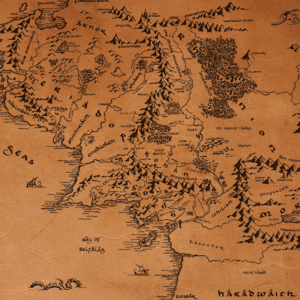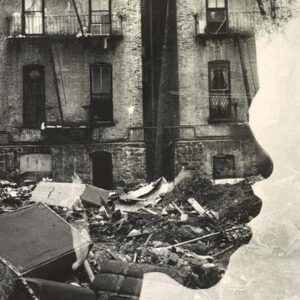
Jen Percy on Self-Preservation, Playing Dead, and Writing About Gendered Violence
Sarah Viren Talks to the author of Girls Play Dead: Acts of Self-Preservation
The first time I encountered Jen Percy’s work she was reading it herself, in Iowa City, in a subterranean venue at a graduate students reading series called Anthology. The essay involved a guinea pig, one I can still picture in my head. Jen is that kind of writer; her prose is indelible. She was finishing an MFA in creative nonfiction at the time, and later finished another in fiction, and later still she reported from Afghanistan and Iraq. She won a national magazine award for her 2016 story about a man who scuba-dives off the coast of Japan looking for his wife’s remains after the tsunami there in 2011.
Another quality of Jen’s prose is that it can feel simultaneously surreal and jarringly precise. I found quality in her first book, Demon Camp, and again in her most recent one, Girls Play Dead: Acts of Self Preservation. We talked about that book via a shared Google doc in the final days of October. Jen was in New York, where she lives with her husband and young son, and I was, temporarily, in France, in a house that the artist Dora Maar retreated to after her abusive relationship with Pablo Picasso ended. That fact was one among many I found myself understanding differently while reading Jen’s book.
*
Sarah Viren: What first drew you to the subject of tonic immobility?
Jen Percy: It was a video of an opossum, a frog, and two birds playing dead in a barn. The animals looked so serene, like they were sleeping, even though they were literally paralyzed with fear. I didn’t know at the time that playing dead could be involuntary. It made me think about so many things, including Sleeping Beauty, and the way we talk about women and passivity more generally. I learned this type of paralysis was a common in sexual assault cases, and then I wondered: what else aren’t we talking about?
SV: Some of the most textually rich moments in the book come in the glimpses of your childhood, which positioned you well to think about the biological response of playing dead, given that we share that response with some other animals. How did your childhood and background prepare you for, or maybe prime you to, write this book?
Ultimately, I think I came to understand freezing as both a prison and a superpower.
JP: Absolutely! And my mother too—her lessons on survival in the wilderness were so foundational to this book. It was a gift really. I loved that I was able to write about something as enormous and political as gendered violence but approach it from an unexpected angle (nature, science, wilderness). One of the first books I read when I started my research was this anthology called Women & Animals which was filled with fascinating anecdotes about how cruelty to animals translates to violence against women, and how women have used animal rights activism to communicate their own oppression under patriarchy. And so animals became a kind of leitmotif throughout the book.
SV: Playing dead, as a concept, starts in your narrative as a biological phenomenon. But as we move forward, you open up new ways of thinking about freezing: there are women stuck in cycles of shaking, literal epileptic seizures, but metaphorically a means of thawing after being frozen; and there are also women trapped, and thus frozen, in their own homes or, in one chapter, in prison because of the sexual abuse they’ve been victim to. How did your understanding of “playing dead” evolve as you reported and wrote this book?
JP: That’s exactly how I structured the book, with this evolution and deepening of the idea of freezing. Ultimately, I think I came to understand freezing as both a prison and a superpower. It’s not always ideal, but it’s how our brains evolved and we are stuck with it because it keeps us alive. All of these women in the book are just trying to survive, physically and emotionally, and being frozen is what allows them the possibility of a future. At the same time it limits them. Self-preservation is a negotiation and there is always something we give up in the process.
I don’t think we will ever escape the kind of desire to label normal or abnormal so it’s good to present the language and flip it on its head.
SV: One thing that felt unnerving to me, while reading, was the question of normality. You show, convincingly, that so many of the reactions people have during and after sexual violence—from freezing to orgasming to only remembering the patterns in the back seat of the taxi cab in which the rape took place—are all “normal.” But the people who experience those reactions don’t often feel that way, nor do those they go to for help. As you write at one point, “There can be a part of ourselves that is agential but also deeply lost and uncertain about what is normal.” How helpful is a word like “normal” when it comes to sexual assault and its aftermath?
JP: Yes! I’m so glad you brought this up. I think after writing this book I realized so much of the content was a salve to self-blame and shame, both which exacerbate trauma in the aftermath of a difficult event. I don’t think we will ever escape the kind of desire to label normal or abnormal so it’s good to present the language and flip it on its head. But I do think it’s useful to undo the thinking and language we have been programmed to use in context of sexual assault. People (police and defense lawyers especially) are very obsessed with controlling the narrative about what is normal.
SV: This book could be a brutal read at times, but also a consoling and affirming one. In an early chapter, you mention reporting from war zones, and the scenes or moments that haunt you from that work. I had a similar question about your reporting for Girls Play Dead. What was most difficult about reporting out this book? What, if anything, still haunts you now?
JP: Thankfully (or not?) I do think I’ve been through some pretty horrific reporting experiences where my life has been threatened at the same time that I’m talking to people about the worst moments of their lives. This includes genocide, mass killings of families (including children and infants) women burning themselves alive to escape rape.
Reporting on survivors of the Islamic State felt a bit like a journey to the underworld. I have spent a lot of time trying to take care of myself and make it so I’m okay after those experiences—because otherwise they destroy you (which isn’t useful to anyone). So I came to this book with a lot of experience. And simply the fact that I wasn’t in danger while reporting these stories made it much easier.
But to answer your question I do think the interviews with women suffering from non-epileptic seizures were the most haunting. I felt so bad that their trauma manifested in a way that was deeply humiliating for them, and, unfortunately, reminded people of The Exorcist. They were absolutely dismissed by doctors and other professionals.
But, as you say, there’s a lot of consolation and hope in the book. I tried to focus on survival and creativity more than the violence itself, and I wanted to capture the internal logic of their worlds as much as possible. I tried to let the women speak and guide the storytelling in a way that I hope also empowered them.
Sarah Viren
Sarah Viren is a contributing writer for the New York Times Magazine and author of the essay collection Mine, which was a finalist for a Lambda Literary Award and longlisted for the PEN/Diamonstein-Spielvogel Award for the Art of the Essay, and the memoir To Name the Bigger Lie, a New York Times Editor’s Choice and named a best book of the year by NPR and LitHub in 2023. A National Endowment for the Arts Fellow and a National Magazine Award finalist, Viren teaches in the creative writing program at Arizona State University.



















